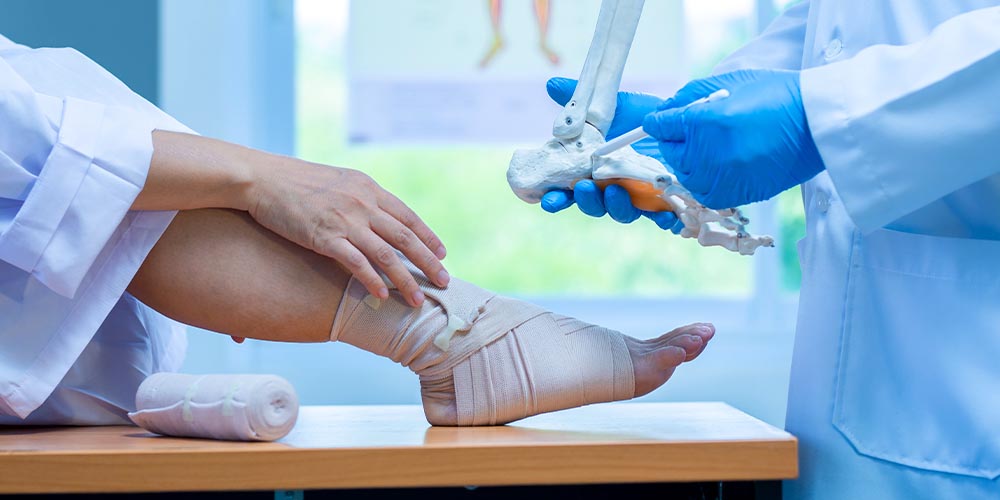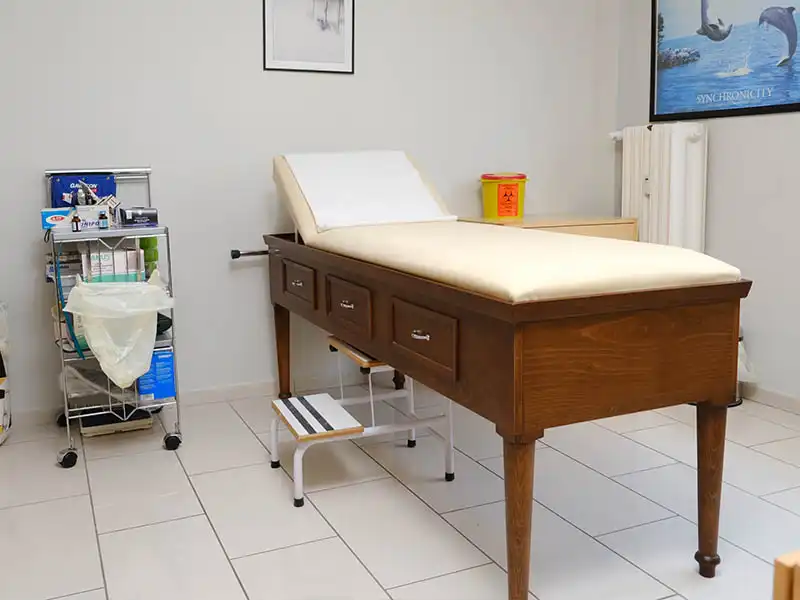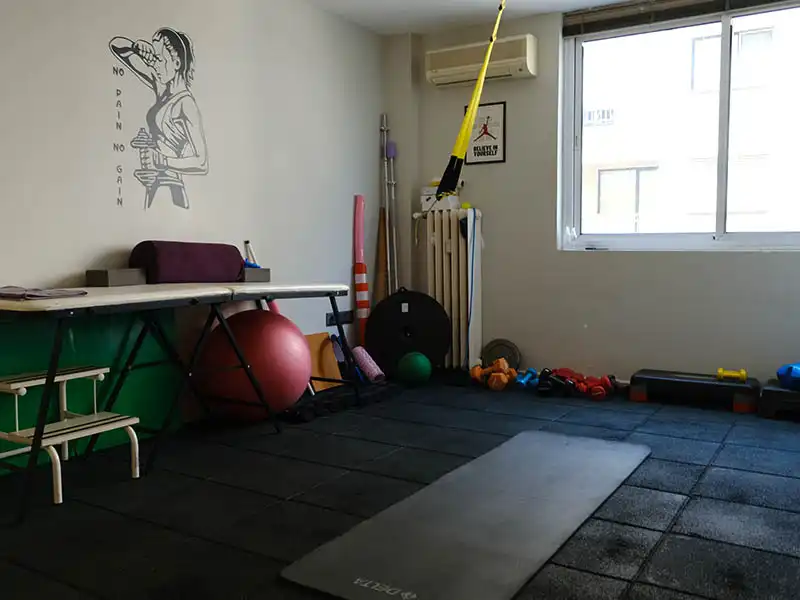WELCOME TO ONV ORTHOPEDICS
Get healthy in Turkey
With over 10 years of expert experience, our aim is to provide you with the best orthopedic and traumatology treatments. We are here to assist you in preserving your health, promoting healing, and regaining your freedom of movement. Please fill out the form for detailed information and appointments.
Foot and Ankle Surgery
Foot and ankle surgery encompasses a range of surgical procedures aimed at addressing various issues related to the foot and ankle. These problems include joint disorders, osteoarthritis, rheumatic diseases, gait abnormalities, diabetic foot problems, ingrown toenails, and different congenital or acquired deformities. Additionally, foot fractures are also commonly encountered in the field of foot and ankle surgery. With the foot comprising 29 bones and 33 joints, some fractures may require surgical intervention.
One common and challenging type of fracture in foot and ankle surgery is heel fractures. These often result from falls from heights. While in the past, surgical treatment options were limited, recent years have seen successful use of surgical operations for treatment. The main concerns addressed in foot and ankle surgery are as follows:
Following knee replacement surgery, patients are encouraged to become active as early as possible and participate in a regular physiotherapy program. These steps are important to protect the new joint, allow the patient to use it as their own joint, and increase muscle strength. On the 20th day after knee replacement surgery, the patient's condition is checked, and patients usually return to their daily lives after this last examination. However, each patient's recovery process is unique and this process can vary depending on the patient's age, general health, and physical condition before surgery.
Flatfoot Deformity
This condition occurs when the muscles responsible for lifting the ankle and toes, or the nerves controlling these muscles, are injured. Individuals experiencing this condition find it difficult to lift the ankle and toes and are unable to turn the foot outward. Treatment may involve nerve or muscle repair, and in some cases, tendon transfer may be necessary.
Toe Deformities
Abnormalities in the shape of the big toe or other toes can occur due to nerve disorders or rheumatic conditions. These deformities can lead to aesthetic problems and difficulty wearing shoes.
Big Toe Problems
Common problems in the big toe include "hallux valgus," an outward turning deformity, and "hallux rigidus," which refers to arthritis in the big toe joint. These conditions can restrict big toe movement and cause pain.
Achilles Tendon Injuries
Excessive loading or degeneration can lead to the rupture or pain in the Achilles tendon, which is more common in athletes and overweight individuals
Ankle Ligament Tears
If ankle sprains are not promptly treated, they can lead to serious problems in the future. Ligament tears can result in frequent ankle sprains and cartilage damage.
Diabetic Foot
Diabetic patients may develop severe foot problems due to long-term uncontrolled blood sugar levels. These problems can manifest as non-healing wounds, bone protrusion, or fractures.

Foot and ankle issues are initially managed with non-surgical methods, including appropriate shoe selection, physical therapy, and the use of orthotic devices. However, for patients seeking medical attention at an advanced stage, surgical intervention may become necessary. Expert surgeons typically perform these surgical procedures, which often yield successful results and help resolve the problems.
Hallux Valgus, for example, is a condition characterized by the outward deviation of the big toe and the formation of a painful bump on the inner side. It is more commonly observed in women and associated with factors like genetic predisposition, flat feet, rheumatoid arthritis, and wearing narrow-toed and high-heeled shoes.
Treatment options for Hallux Valgus include both non-surgical methods and surgical interventions. Non-surgical treatment aims to prevent the progression of the disease and alleviate symptoms and may involve the use of silicone pads, night splints, and appropriate shoe selection.
However, in cases where Hallux Valgus is advanced and accompanied by significant pain or deformity, surgical intervention may be recommended. Surgical procedures involve corrective measures at the base of the big toe and may include correcting misaligned bones or repairing ligaments if necessary. The recovery process after surgery varies depending on factors such as the individual's overall health, the complexity of the surgery, and the specific intervention performed. During the postoperative period, patients typically progress to weight-bearing and controlled movement. Following the doctor's recommendations during the healing process is essential. Factors such as partial weight-bearing, physical therapy, and rehabilitation programs support the healing process. Regular follow-up appointments after surgery are also crucial for evaluating the patient's progress and making any necessary interventions
Clinic Images
What Our Patients Say
Aliquam a augue suscipit, luctus neque purus ipsum neque dolor primis libero at tempus, blandit posuere ligula varius congue cursus porta feugiat

I had surgeries on both of my feet. The surgery was challenging, and after extensive research, I decided to have the operation with Dr. Burak Önvural. It was the right decision. Dr. Burak and his team are very attentive, kind, and warm-hearted. They provided me with great support in every aspect. My treatment process is still ongoing. I am so glad to have met Dr. Burak Önvural. You can trust him blindly.

I had hallux valgus, a bunion on my foot, for years. Especially on my right foot, it had progressed to a point where my big toe was overlapping the other toes. After conducting research, I found Dr. Burak Önvural.

We met Dr. Burak 15 days ago when we made the decision for anterior cruciate ligament surgery. He is an expert in his field and very warm-hearted, understanding the patient's psychology very well. He has a great team, and we can be sure that we will be satisfied with the care and attention even after the surgery.

Hello, as an athlete, I have experienced various injuries, and in every injury, my brother Burak ÖNVURAL has been the one to heal me quickly and in a healthy way. I am very grateful to him. He is both very caring towards his patients and also very competent in his profession. 🙏

When I hear the name 'Dr. Burak Önvural,' such a sense of trust fills me that I simply say 'okay' and lean back, following his advice. Both his profession and character are indisputably exceptional for us. For a patient, the most important aspect is trust in their doctor, and as a family, we have that trust in Dr. Burak forever. My dear doctor, who successfully performed most of my mother's surgeries, thank you for being in our lives.

Everything is perfect. Mr. Burak's attention is excellent, and there is a serious interest and care in the clinic. My wife had been experiencing arm pain for over 2 years, and we researched extensively. Thanks to Mr. Burak's treatment, it was very beneficial. I thank him very much, and may God protect such good-hearted people.

Dr. Burak Önvural is the best physician I have known, not only for his scientific knowledge and surgical skills but also for his compassionate care and dedication to his patients.

Truly an amazing doctor, he took his time to explain everything, very compassionate and understanding, he took his time and he performed minor surgery on my thumb, I am very fortunate to have met doctor Burak

I am pleased to highly recommend Dr.Burak without reservation. He is clearly an accomplished Orthopedic surgeon but also 100% committed to provide a full service with his team. Their attention to detail ensured that I had a successful hip replacement with the minimum of discomfort and a quick recovery. The ‘after care’ was second to none.











